(12995 products available)













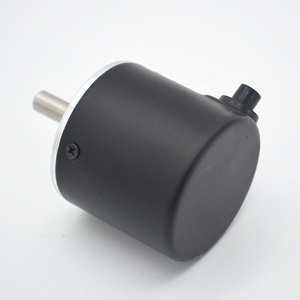


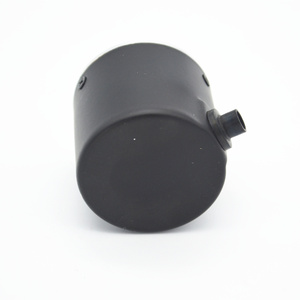

















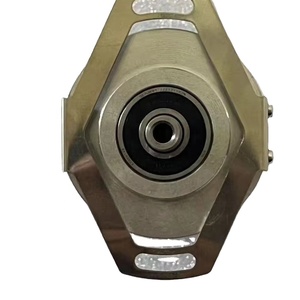

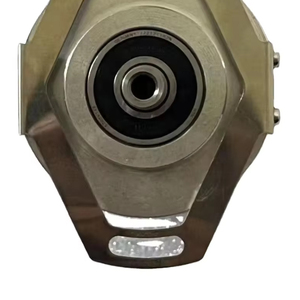






































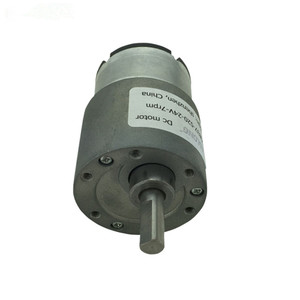





















There are several types of signal converter, each designed to serve specific functions depending on the need of a given application. Business owners should understand these differences because they will help in purchasing the right type in the right quantity and quality.
A rotary machine converts rotational motion into electrical signals. They primarily find use in applications that require the measurement of angular position or rotation. An example can be seen in industrial machinery where it is required to control motor positions, measuring shafts, or detecting rotary movement.
On the other hand, linear encoders measure the linear displacement or motion. They provide precise measurements of position along a straight path and are commonly used in applications like machine tools, where linear movement is an essential task.
Incremental encoders provide relative position information by emitting a series of pulses as the object being measured moves. This type is also often used in applications that require simple motion control, such as in robotic arms and automated conveyors.
As opposed to incremental encoders, absolute encoders provide a unique position value in every single shaft rotation, meaning they supply absolute position data. These are primarily used in applications where the loss of position information would have catastrophic effects. These applications include CNC machinery and robotics.
Optical encoders operate by using light and photodetectors to convert positions into electrical signals. Usually, these encoders are very accurate and have a high resolution compared with other types. Other types include magnetic and capacitive encoders, which are often used in industrial applications that do not require too high precision.
As a mechanical device, all encoders convert various kinds of input motion into electrical signals. This makes them key elements in systems that require precision in motion control or position measurement. There are various types of encoders, and each of them has its specific function depending on the application requirement.
Rotary encoders help in providing the rotational position of a shaft or axle, while linear ones measure the displacement in a straight line. Incremental encoders track motion changes by providing relative positions as electric pulses, and absolute encoders gives unique position data to every rotation of their shaft.
Generally, optical, contactless, and magnetic encoders are preferred in industries that require accurate speed and position feedback for automated tasks. These devices help in improving machine performance while also ensuring high product quality and reducing human error.
Some of the important features that distinguish the encoder from each other include:
Resolution
Resolution indicates the number of pulses or position increments per rotation that the encoder will output. High resolution encoders provide finer measurements and, therefore, are useful for applications that require a high degree of precision in motion control.
Accuracy
Other important features include accuracy, which measures the degree to which the encoder's output will reflect the actual position or motion. In many cases, absolute encoders have higher accuracy than incremental ones simply because they provide direct position information.
Tolerance
Industrial encoders are often exposed to harsh operating conditions. Thus, their tolerance to factors such as temperature, vibration, or humidity is an important feature. Heavy-duty encoders may operate in extreme conditions while maintaining performance.
Speed Capability
Different types of encoders can handle varying levels of speed. For instance, high-speed encoders can be employed in applications that require fast motion. These could include motor control in robotic systems.
Feedback Type
As many of its types, encoders use either incremental or absolute feedback. Generally, incremental feedback is suitable for applications that require simple positioning, while absolute feedback is necessary for critical position confirmation.
The encoder's design is, therefore, a major consideration when selecting the right one for an application. An example of this is a rotary encoder designed to be more compact and easily integrated into robotic systems. In contrast, an industrial-grade encoder will be more robust and have a higher resolution feature for machining tools.
Every design aspect of an encoder, from its internal sensor type to the housing configuration, plays a significant role in its functionality in a given application. This, of course, includes how the encoder is wired up to the circuit and what material it is made from. So, when choosing encoders in bulk, business owners have to consider various mechanical and electrical design parameters.
Summary of the various design and functional aspects of encoders
Apart from helping clients understand the different types and features of encoders, it is also important for business owners to know the various application scenarios where the encoders are used. This will help them stock the right kind of encoders that their clients will need.
Encoders are widely used in these industries to control precisely the motors and actuators. Engineers, therefore, use them to get feedback on positions and motions so as to automate just about any process. An example is using encoders to move robotic arms with high precision to make them mimic human hands.
Here, they help ensure that the cutting tools are moved to the exact desired positions to give a clean and precise cut. CNC routers work on wood and other materials, and encoders make them do this with a high level of precision.
They help to use encoders in electric vehicle (EV) motors and other automotive applications to know exactly how fast the wheels are turning or the position of the throttle. These are crucial pieces of feedback for various safety systems and EV encoders, which help improve the vehicle's overall performance and efficiency.
They use encoders for position and motion feedback in navigation systems, robotic arms, and other critical applications. For these industries, accuracy, reliability, and tolerance under extreme conditions become top priorities.
They are employed in imaging systems, surgical robots, and other medical equipment that require precision in motion or positioning. Some common examples include encoders in MRI machines that provide position feedback for the imaging coils.
They also use encoders in numerous devices. An everyday example is the audio equipment in which an encoder translates the knob rotation into digital signals that adjust the volume or tuning. Other areas they use them in is gaming devices such as joysticks and game controllers for position feedback.
Renewable energy systems such as wind turbines and solar trackers require encoders for the optimal position feedback. Wind turbines also use encoders to measure the rotor position and direction to adjust the blades for the maximum aerodynamic efficiency.
There are a few factors that play when a certain encoder has to be selected. Some of them relate to the environment where the encoders are going to operate. Others concern the jobs that need to be accomplished and the kinds of feedback that are required. Below are some encoder selection factors.
What are the environmental conditions where the encoders will operate? Will the encoders be continuously exposed to moisture, extreme temperatures, or vibrations? For such an environment, rugged-sealed encoders should be the choice. A business owner should stock such encoders to cater to clients operating in harsh environments.
For clients who will require rotational position feedback, a rotary encoder would be ideal. However, a linear encoder should suffice for clients who need position measurement along a straight path.
How precise do the clients need the position or motion measurements to be? If they require fine resolutions and high accuracy, such places as factory automation, aerospace, and medical applications, then stock high-resolution encoders.
This means different applications will require different types of encoders. For instance, the CNC Machines will need high-accuracy encoders, while consumer electronics will do well with less complex ones.
This depends on the kind of application in question. Operating systems that require verification of position or absolute error feedback will need absolute encoders, while those systems that can get by with relative measurements will need incremental encoders.
Different encoders will have different tolerances to factors such as temperature, dust, and humidity. It is only natural to choose one that has a higher tolerance to such factors in the operating environment.
How fast the intended applications run will also affect the encoder selection. High-speed applications like robotics or aerospace would require high-speed encoders.
A1: Yes, there is. An electronic rotary position sensor converts a mechanical signal into an electrical signal. In contrast, mechanical encoders use different mechanical systems to perform the same task.
A2: Two main types of feedback an encoder can provide are relative and absolute. Relative feedback tells the system the change in position, while absolute feedback provides precise position information. Position encoders come in handy where precision in position is vital in an application, while incremental encoders for applications that require motion detection.
A3: The main factors to consider when selecting an encoder are application requirement, operational environment, and type of motion to be measured. The more these encoder parameters relate to the clients' needs, the better their performance will be.
A4: Yes, it can as long as it has been adequately sealed from the ingress of moisture, dust, and other contaminants that could damage its internal components. Also, using one constructed from robust material will help endure harsh working conditions.
A5: The main purpose of the feedback loop in an encoder is to maintain control in an application. For instance, in a motor control system, the encoder will provide the position information so that the controller can adjust the motor's operation to meet the set requirement. Without the feedback loop, the system will simply lose its precision and become an open-loop system.